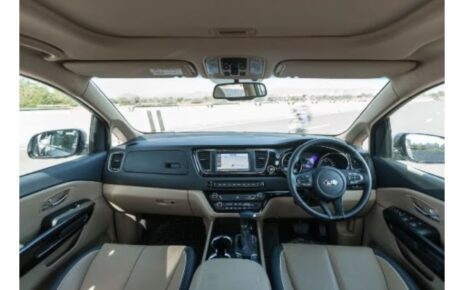Tata Motors’ domestic business performed better than market expectations in the March quarter. That is music to the ears of shareholders who had been patiently awaiting for the turnaround. However, the joy has been tempered by the subdued performance at Jaguar & Land Rover (JLR). In the near future, JLR is expected to face headwinds from rapidly evolving automotive technology and uncertainty in UK and Europe.
Headwinds galore in JLR

JLR’s retail volumes and revenue fell 4 percent each year-on-year (YoY). Volumes in China, North America and overseas markets rose 19.9 percent, 4.7 percent and 3.4 percent, respectively, on the back of new launches. Volumes in UK and Europe declined 12.8 percent and 5.3 percent, respectively, on concerns over more restrictions on diesel vehicles in those economies. JLR’s European and UK portfolios are predominantly diesel.
JLR remains optimistic about 8-9 percent long-term EBIT margin (currently at 6.7 percent) from a changed product mix, benefits of operating leverage and cost optimisation. We do not see this panning out in the next couple of years. But JLR has a strong product pipeline and an excellent track record of innovation which should give investors enough confidence about its ability to weather the storm. The company is launching its first ever electric car, the Jaguar I-Pace and Range Rover plug-in hybrid.
Tata Motors’ five star performance
Performance of the Indian business was a big positive. Attention of the group’s senior management and implementation of the turnaround strategy is finally reflecting in the numbers. Overall volume growth of 39 percent YoY was broad-based.

In the commercial vehicle (CV) market, demand for higher tonnage vehicles, increased government funding, growth in e-commerce, acceptance of the company’s SCR (selective catalytic reduction) technology has helped. In fact, it could gain market share after seven years.
Launches like Nexon, Tiago, Togor and Hexa in the passenger vehicle (PV) segment has been received well by customers. The new product launches helped it gain market share for the second year in a row.

During the March quarter, after adjusting for one-offs related to change in the capitalisation policy, the company reported a pre-tax profit of Rs 488.2 crore as against a pre-tax loss of Rs 498 crore.
Riding on higher cash profit and favourable working capital, the company reported free cash flow of Rs 2,002 crore despite high investment spending on product, platform and technology.
Valuation
Given the divergent near-term outlook, we have revised our estimates downwards. The stock (down more than 6 percent) has seen a sharp post-result reaction, aggravated by weakness in the broader market. The management has reiterated its focus on domestic CVs, PVs and investment in technology at JLR as their key priorities going forward. We need to be cautious on the business and continuously monitor performance of its domestic and JLR businesses.





